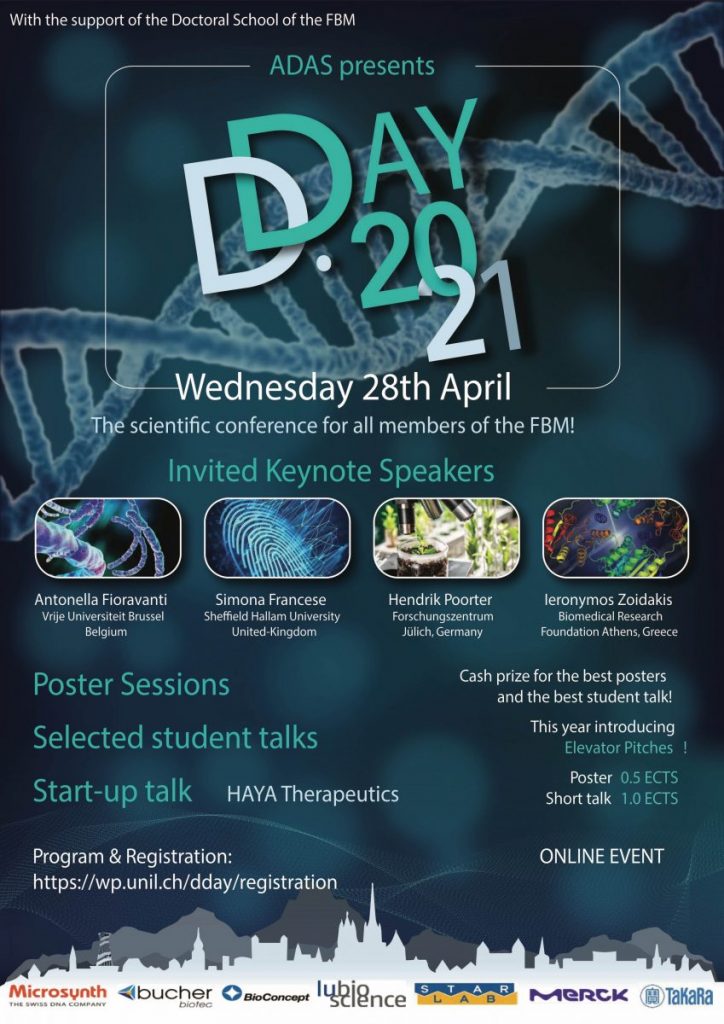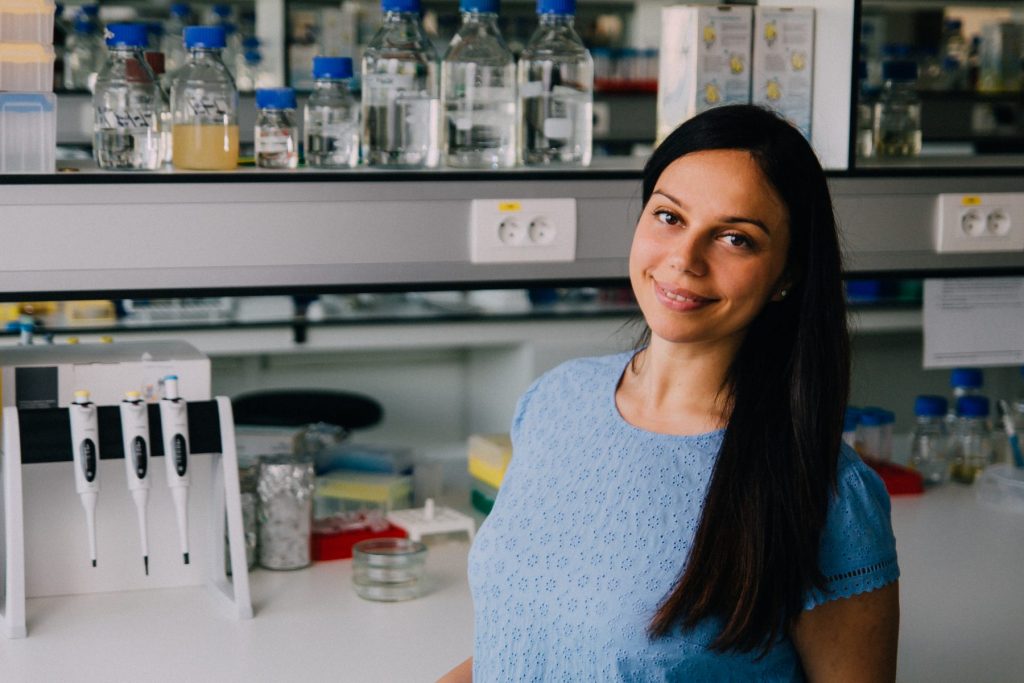Keynote Speakers
Antonella Fioravanti
Dpt, Vrije Universiteit Brussel, Belgium
Bacillus anthracis’ S-layer is a cell envelope load-bearing component
As part of its immune evasion strategy Bacillus anthracis presents a dynamic and complex composition of its cell envelope. In the vegetative bacteria the cell surface is covered by one of two 2D-protein arrays known as the Sap or EA1 S-layer (surface layer), present during exponential and stationary growth phase, respectively.
S-layers are commonly found as the outermost cell surface components of procaryotic cells. Recently we succeeded in exposing the disruption of S-layer integrity as a mechanism with therapeutic potential in S-layer carrying pathogens. Using anti-Sap Nanobodies (Nbs [5]) able to destroy Sap S-layer integrity, we could show that acute disruption of B. anthracis S-layer integrity results in severe morphological cell surface defects and in attenuated growth. Unlike the genetic knockout of sap, cells with acutely compromised Sap S-layer would wrinkle and collapse.
In Gram-positive bacteria, the peptidoglycan sacculus is thought to form the major cell envelope supporting structure, ensuring cell shape and withstanding turgor pressure. To investigate the unexpected observations that the loss of Sap results in cell collapse, we used a combination of Atomic Force Microscopy and light microscopy observation to probe the contribution of B. anthracis S-layer to cell integrity. Our new experiments show that cells presenting a compromised S-layer by means of Nbs insult or genetic knockout lose their elasticity and stiffness. Furthermore, our experiments show that S-layer integrity is required to maintain cell shape in presence of osmotic stresses. These results present compelling experimental evidence to the hypothesis that the S-layer can serve as prokaryotic exoskeletons and a major load-bearing component of bacterial cells.

Simona Francese
Dpt, Sheffield Hallam University, United-Kingdom
Fighting crime with lasers
As criminals become more forensically aware of their traceability, forensic scientists need to up their game with advancing implementable technology. Technology improvements should aim to enhance recoverability of the evidence and expand, strengthen and communicate retrievable intelligence.
Fingerprinting still remains one of the most powerful means of biometric identification. However it has been underplayed in terms of the additional value and information they contain.
Pioneering work at Sheffield Hallam University, UK has demonstrated the capabilities of Matrix Assisted Laser Desorption Ionisation Mass Spectrometry Imaging (MALDI MSI) to yield both physical and chemical information by providing multiple images of the same fingermark, simultaneous with additional intelligence. Physical information could complement the ridge pattern retrieved by CSI or even provide the only ridge pattern image for database comparison, as well as enabling separation of overlapping impressions. The opportunity to detect chemical information (aminoacids, fatty acids, peptides, proteins, drugs, toiletry products, condom lubricants and blood as a few examples) could provide investigative leads on physiological, pathological and lifestyle information as well as being useful to prove/disproof the suspect’s statements. In a more recent publication, we report on the opportunity to reliably detect and map the presence of blood onto the identifying ridges of a fingermark, thus providing associative evidence between the events of the bloodshed and the biometric information. Consumption of drugs and alcohol can also be proved and this is useful to inform on the suspect’s state of mind while committing the crime. Additional applications of this technology with respect to fingermark chemical analysis will also be illustrated. Here, the pioneering use and rapid developments of MALDI MS and MSI for the analysis of latent and blood marks are presented together with insights into Police casework undertaken in collaboration with West Yorkshire Police, DSTL and the Home Office in UK.
Hendrik Poorter
Dptmt, Forschungszentrum Jülich, Germany
Meta-Phenomics: towards a ‘periodic table’ of plant responses to their a-biotic environment
Plant biologists made a tremendous but non-systematic effort during the past 100 years to characterize the response of a wide array of plant species to their environment. They did so by quantifying physiological and structural traits from the sub-cellular up to the whole-plant level. As a result, a large number of phenotypic data have been published in agronomy, biology, ecology and forestry journals. Unfortunately, this valuable information has not been unified in a quantitative and structured way which allows for a systematic analysis. My aim is to fill this gap by building a large database containing the responses of circa 100 physiological and structural traits for a wide range of plant species, and for 12 different environmental factors. These data are subsequently used to establish generalized dose-response curves. This approach – that I refer to as ‘Meta-Phenomics’ – can be a very valuable tool in teaching, modeling and understanding the integrated response of plants to their environment.
Reference dose-response curves can be found at www.metaphenomics.org.
Ieronymos Zoidakis
Deptmt, Biomedical Research Foundation Athens, Greece
Trials and errors in the proteomic studies of bladder cancer
Bladder cancer (BC) has a high recurrence rate and requires life-long monitoring by invasive cystoscopy. BC has the highest treatment and monitoring cost per patient among all cancers. Thus, the disease imposes a heavy burden on the health system and society. Unfortunately there are no available biomarkers that can improve BC patient management. After almost 30 years without new therapeutic approaches for BC treatment, in 2016 the first immunotherapy for BC patients was approved by the FDA. The current understanding of the disease does not allow efficient patient stratification for administration of this targeted therapy.
Proteomics approaches were used for the identification of putative urinary biomarkers for monitoring BC patients. However, these findings were not validated since the analytical performance of ELISA in urine was poor. Proteomic profiling of BC tumors in contrast has yielded interesting insights on molecular subtypes that open the way for improving BC care through patient stratification and novel therapeutic approaches.
Schedule
09:00 Welcome by ADAS
09:05 Antonella Fioravanti – Dpt, Vrije Universiteit Brussel, Belgium.
“Bacillus anthracis’ S-layer is a cell envelope load-bearing component“
09:35 Student talk 1: Alejandro Osorio-Forero – Dpt. of Fundamental Neurosciences, UNIL.
“Unraveling the mechanisms of continuity and fragility of sleep”
09:50 5×3 min pitches: Frank Spichiger, Gabriella Fernandes-Pires and Victoria Salati
10:05 Sponsor presentations : Merck and Cytiva
10:20 Poster session 1 (all posters) and opportunity to talk to sponsors
11:00 Student talk 2: Anna Mennella – Dpt. of Dermatology, CHUV.
“Unabated type I Interferon engagement by TNF blockade leads to B-cell autoimmunity and could precede the formation of anti-drug antibodies”
11:15 Student talk 3: Fabio Duarte – Dpt. of Clinical Neurosciences, CHUV.
“Allele-specific mutant HTT inactivation with a self-inactivating CRISPR/Cas9 system”
11:30 Student talk 4: Kevin Morisod – Dpt. of Vulnerabilities and Social Medicine, CHUV.
“Prevalence of SARS-CoV-2 and associated risk factors among asylum seekers and refugees living in centres: a cross-sectional serologic study in Canton of Vaud, Switzerland”
11:45 Simona Francese – Dpt, Sheffield Hallam University, United-Kingdom.
“Fighting crime with lasers “
12:15 Lunch break
13:15 Student talk 5: Marisa Dilucca – Dpt. of Biochemistry, UNIL.
“GBP-dependent non-canonical inflammasome activation prevents B. thailandensis-induced multi-nucleated giant cell formation”
13:30 Student talk 6: Laura Solanelles-Farré – Dpt. of Fundamental Neurosciences, UNIL.
“Cerebellar development modeling in 4D”
13:45 Hendrik Poorter – Dptmt, Forschungszentrum Jülich, Germany.
“Meta-Phenomics: towards a ‘periodic table’ of plant responses to their a-biotic environment“
14:15 2×3 min pitches: Larise Oberholster and Giorgio Mandferdelli
14:30 Sponsor presentations : Bioconcept and Takara
14:45 Poster session 2 (all posters) and opportunity to talk to sponsors
15:30 Student talk 7: Vincent de Bakker – Dpt. of Fundamental Microbiology, UNIL.
“Multi-omics profiling to unravel pathogenic pneumococcal phenotypes”
15:45 Student talk 8: Julie Ramain – Service of General Psychiatry, Treatment and Early Intervention in Psychosis Program, CHUV.
“Suicidality in first-episode affective psychoses associated with mood and paranoid symptom interactions”
16:00 Start-up talk: Samir Ounzain from HAYA Therapeutics.
16:30 Ieronymos Zoidakis – Deptmt, Biomedical Research Foundation Athens, Greece.
“Trials and errors in the proteomic studies of bladder cancer“
17:00 Presentation and Poster Awards, Closing remarks



